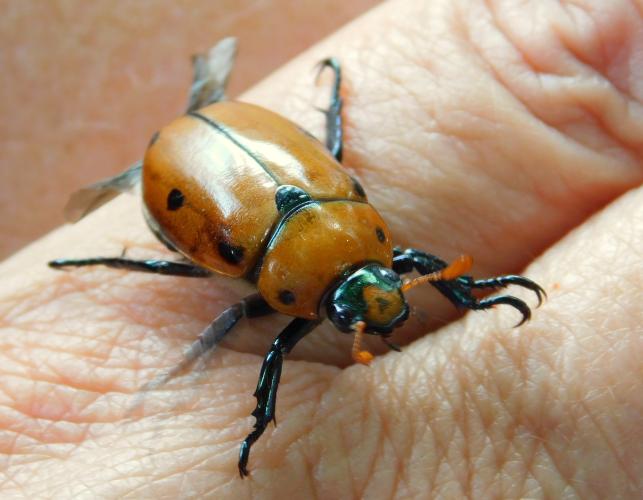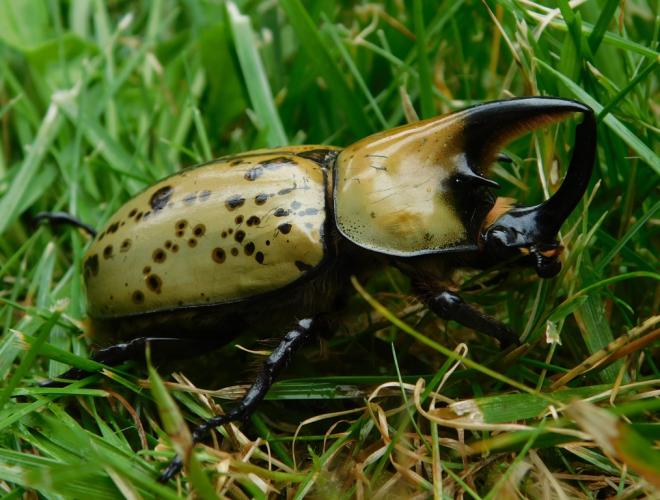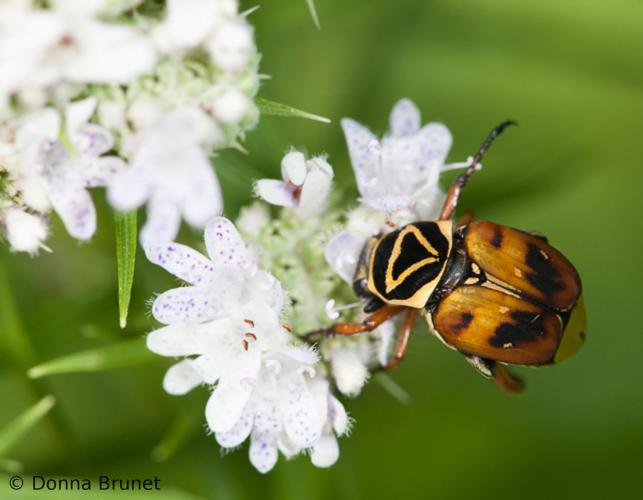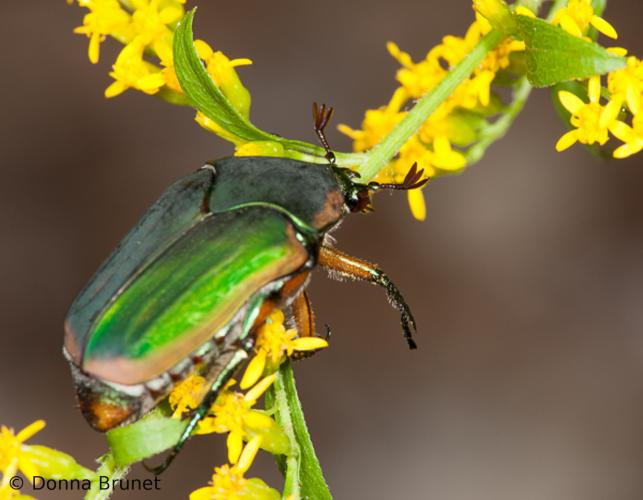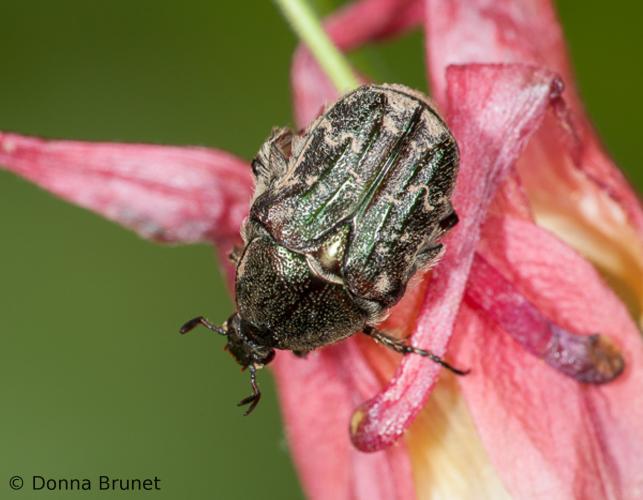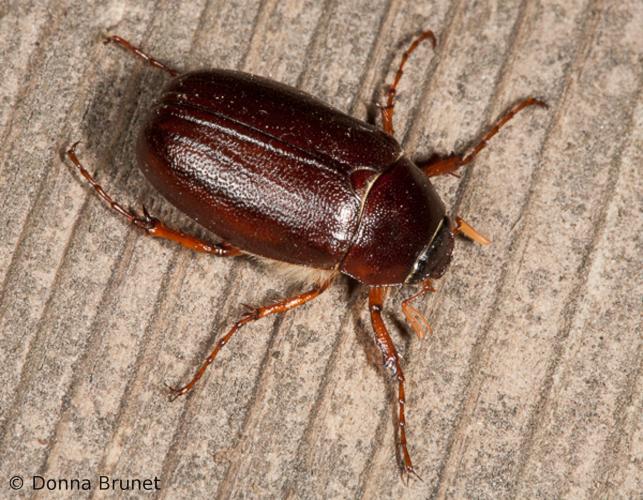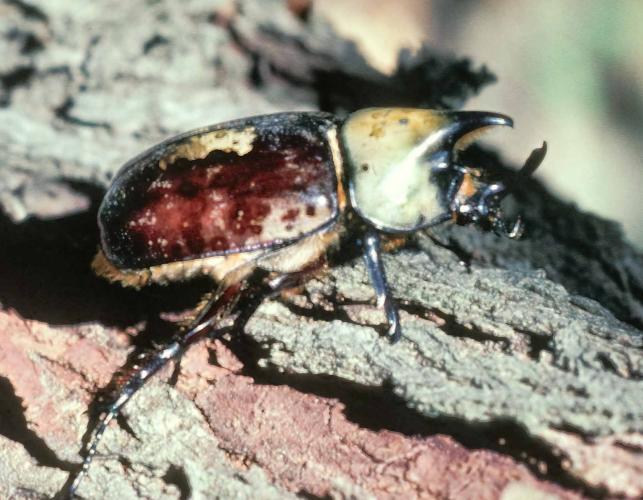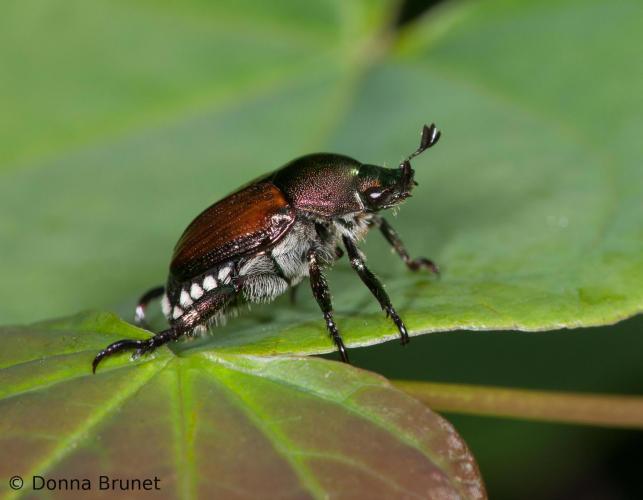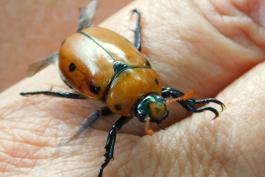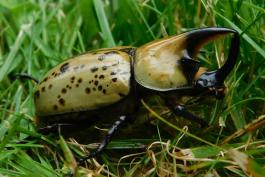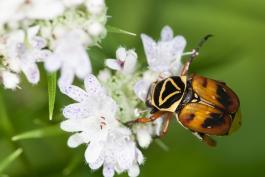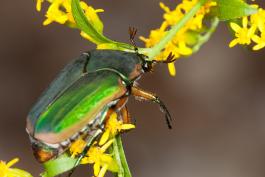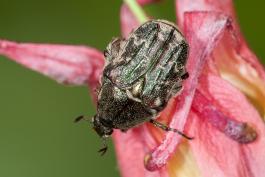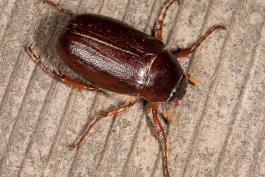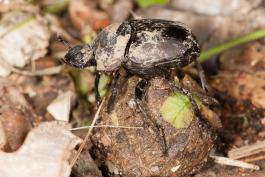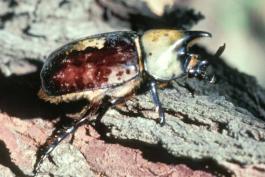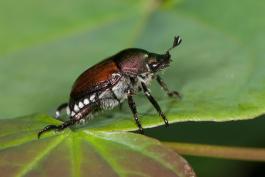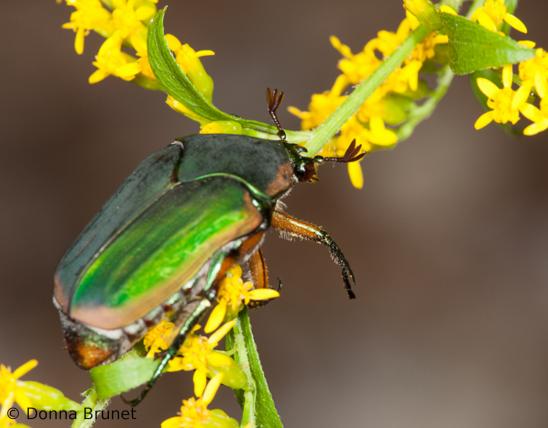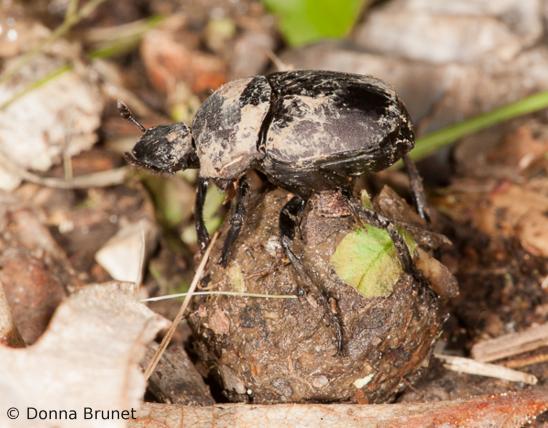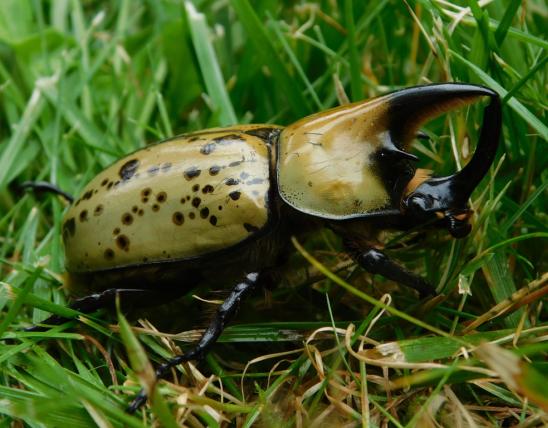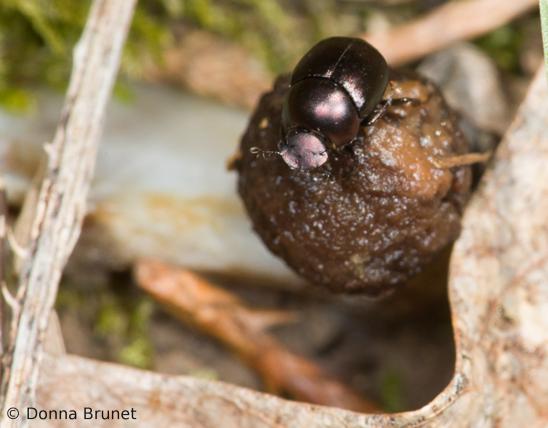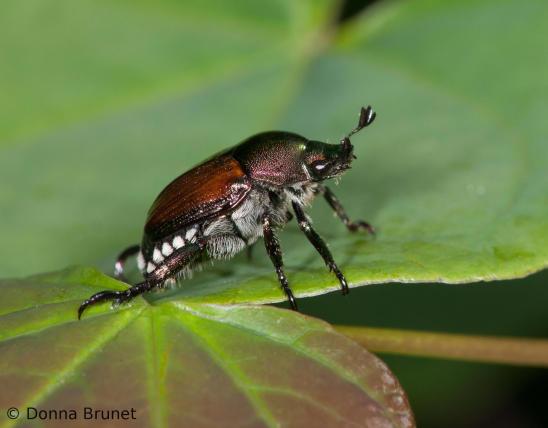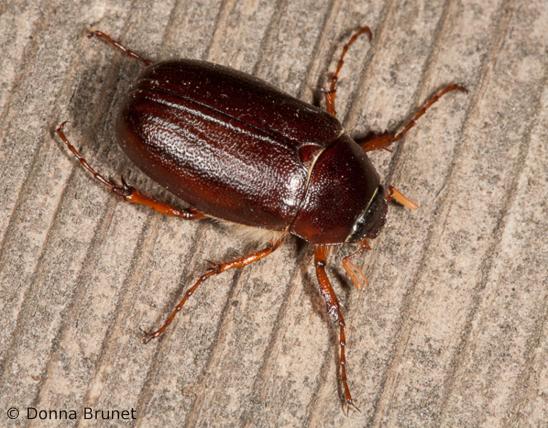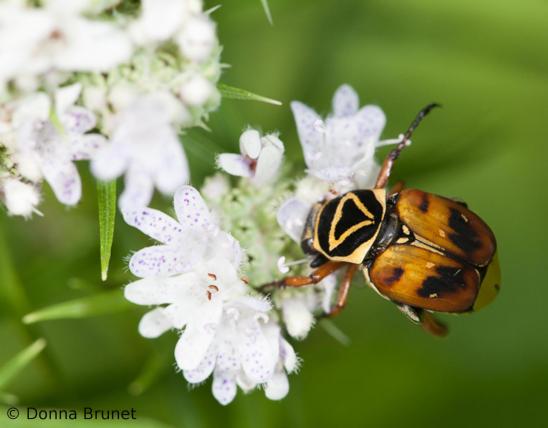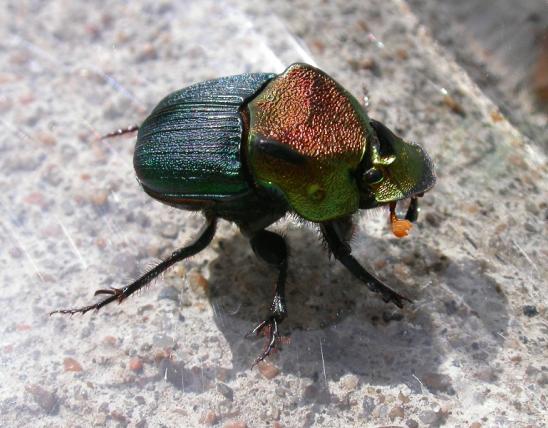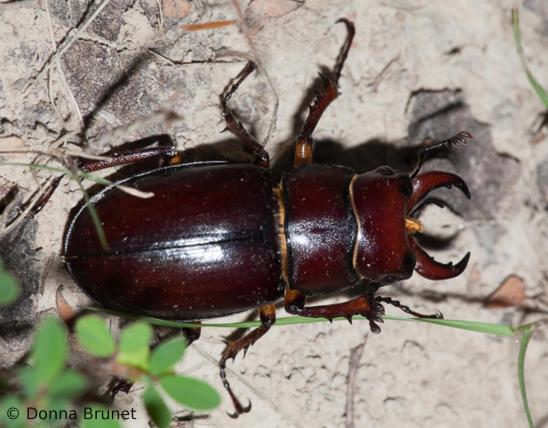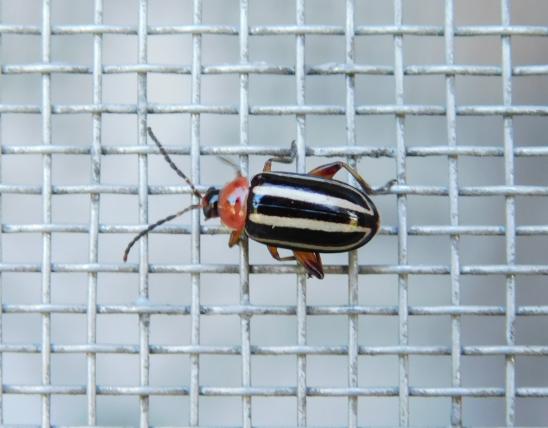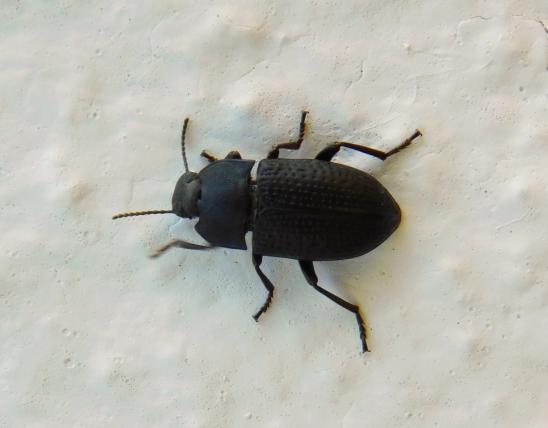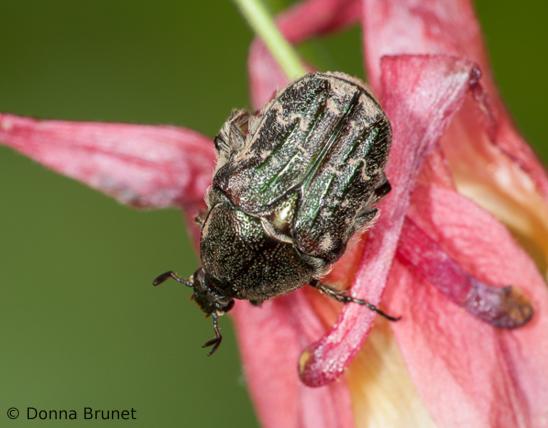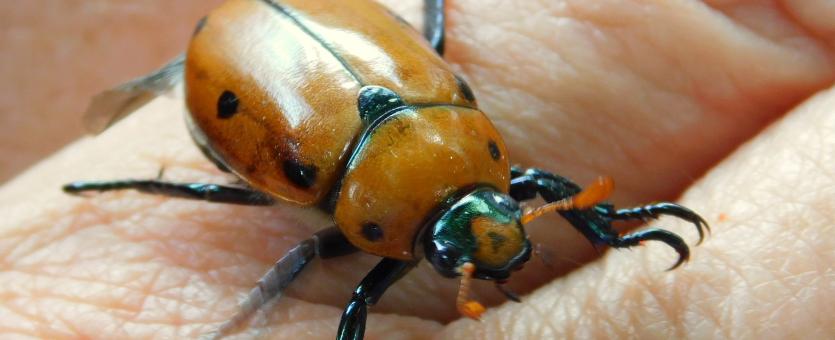
The scarab beetle family is very large, with breathtaking variety — and often great beauty. Although many are black, brownish, or drab, many scarabs are colorful, some with iridescent greens and other colors, others looking as if they were covered with shiny enamel paint. They are oval or elongated, stout, usually with rounded backs, and have clubbed antennae with segments that can press tightly together or can be fanned open like leaves. In several species, the males (sometimes females, too) have pointy horns. Several species are quite large.
The larvae of most scarab beetles are whitish, C-shaped grubs that live underground or in other protected places. The heads are often brownish or black, and they have three pairs of legs.
Length: from less than ¼ inch to 2 inches (adults); to about 2 inches (larvae) (varies with species).

Statewide.
Habitat and Conservation
The various scarab beetles occupy different habitats. Some are nocturnal; others are active during daytime. Many are good fliers and are attracted to lights at night. Scarabs that feed on decomposing materials, such as dung beetles and green June beetles, are seen on rank and rotting materials. Plant feeders are found on their favorite species of plants: rose chafers on members of the rose family, the delta flower scarab on members of the carrot family, etc. Others eat underground plant parts.
Food
Adults feed on various materials, according to species. The mouthparts are mostly adapted for chewing. Some eat decaying materials such as manure, carrion, rotting and fermenting fruits, and composting plant material. Some eat fungi and mushrooms, or sap. Others burrow into the soil and chew plant roots. Some eat flowers, pollen, and nectar, some species pollinating flowers in the process. Many eat leaves and fruits. The larvae of most eat decaying materials or plant roots.
Status
Common. Some, such as the introduced Japanese beetle, are serious agricultural pests. The root-eating “white grubs” of some species disfigure golf courses and lawns. Meanwhile, other scarabs are quite welcome, considering human interests. Dung beetles, for example, save US agriculture hundreds of millions of dollars annually for helping to clean pastures and barnyards. Most scarabs help tremendously in helping to break down decomposing materials and thus nourish the soil.
Life Cycle
Mating often takes place near the food material that the offspring will need. The elaborate antennae of the adults are used to smell and locate this food. Fertilized females deposit eggs in the soil, on the rotting compost heap or dead log, on the manure pile, etc. The grubs eat and grow, in some species for years, sometimes descending lower into the soil to overwinter. When fully grown, the larvae pupate, then emerge as adults, which will fly, mate, and lay eggs.
Human Connections
Some types of scarabs are pests to lawns, gardens, and crops. Many others help to decompose materials in the compost heap. Meanwhile, the grubs are a free, live fishing bait. One type of scarab was revered in ancient Egypt. Scarabs are special favorites among insect collectors.
Ecosystem Connections
Many animals root out and eat the grubs, including skunks, moles, and birds such as crows and grackles. Many other animals, including birds, bats, and frogs, eat the adults. Several types of flies and wasps are parasitic on the adults and larvae, laying eggs on them that hatch and devour the host.
